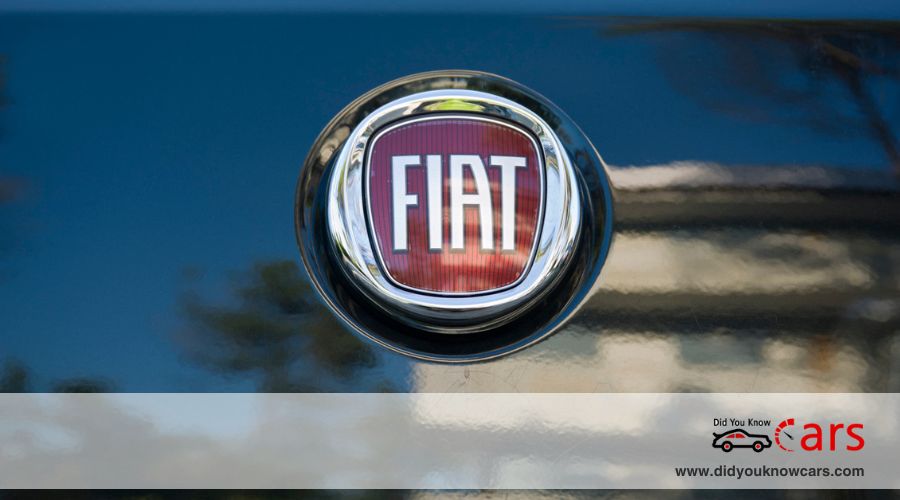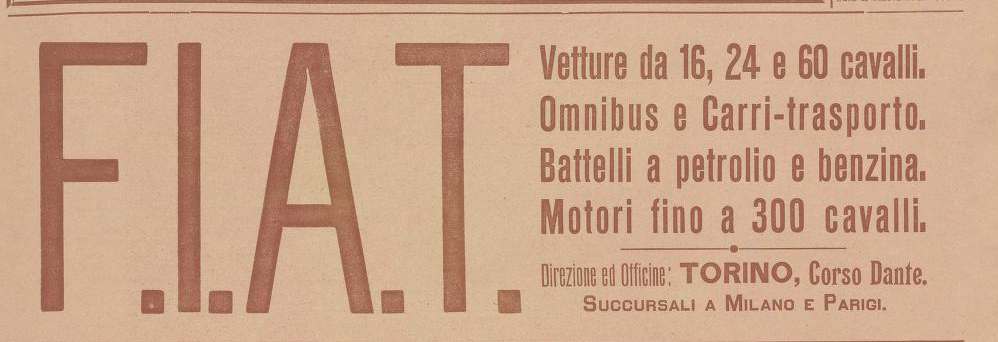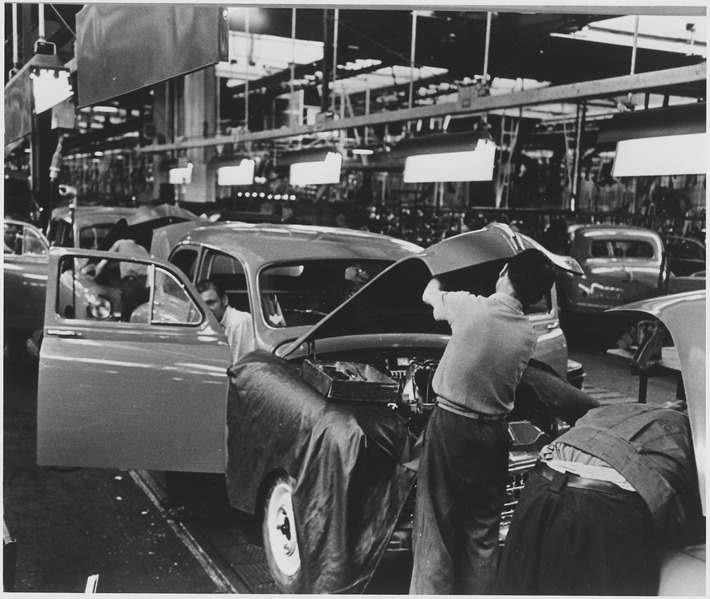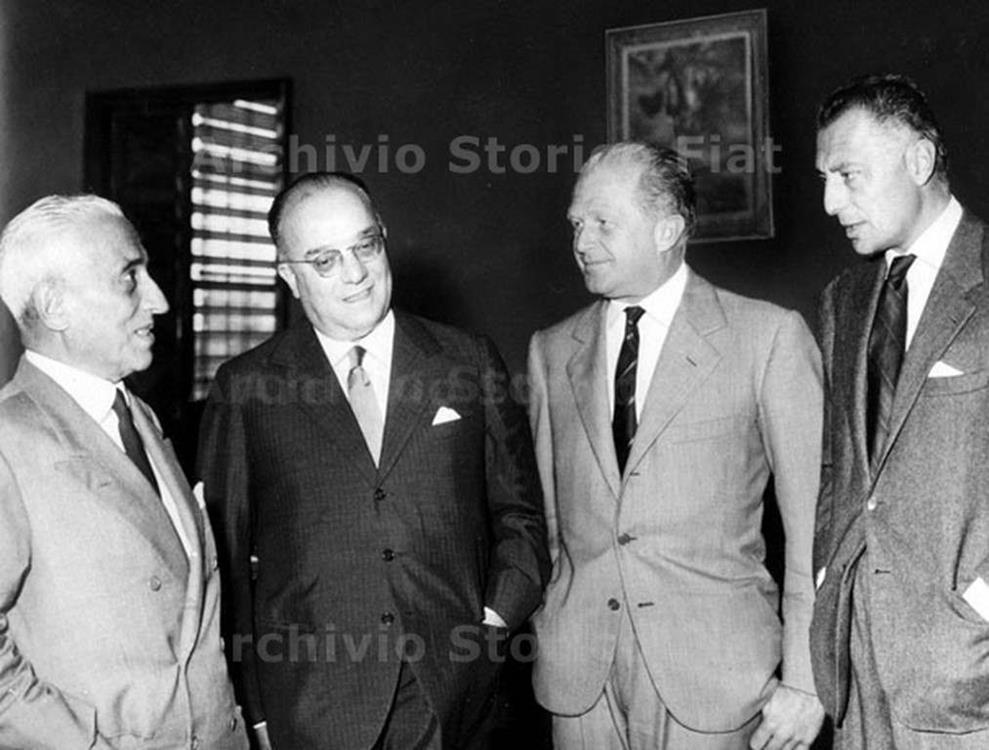Fiat has long stood at the forefront of Italy’s automotive industry, and for over a century, it not only led as the largest car maker in Italy but also held a prominent position in Europe. It’s the largest automobile manufacturer in Italy and is no longer a niche Italian car company because it is now part of Fiat Chrysler Automobiles or FCA, making it one of the “Big Three” in the US auto manufacturers behind General Motors and Ford.
Fiat has held a leading role in the automotive industry since its inception in 1899, at the dawn of Italian industrialization. This article will take you through the remarkable evolution of Fiat.
The Beginnings of Fiat (1899-1911)
The Foundation and Early Vision (1899-1900)
On July 11, 1899, Fiat was established by a group of pioneering investors, including Giovanni Agnelli. They founded the Fabbrica Italiana Automobili Torino (F.I.A.T.), or the Italian Automobile Factory of Turin, marking a new chapter in automotive history. The first Fiat plant opened its doors in 1900 in Corso Dante, Turin, with a modest workforce of 150 people. The initial production was humble yet significant, with only 24 cars manufactured in the first year, including the 3 ½ CV model.
Racing Success and Expansion (1901-1906)
Racing became an early avenue for Fiat to showcase its engineering prowess. In 1902, the company made a notable entry into the world of motorsport when Vincenzo Lancia, driving the Fiat 24 HP model, triumphed in the Sassi-Superga uphill race. This victory was more than just a win on the track; it symbolized Fiat’s commitment to excellence and innovation.
By 1904, Fiat had designed its first logo, an oval shape with a distinctive blue background, further solidifying its brand identity. The company’s growth was rapid, with automobile production expanding to approximately 1,149 cars by 1906. The company then went public, selling shares through the Milan Stock Exchange.
Entering the U.S. Market (1907-1911)
Fiat did not wait long to venture into international markets. In 1908, Fiat made a bold move by establishing the Fiat Automobile Company in the U.S. Fiat became quickly known as a luxury brand in the U.S.
The move to the U.S. was not just a geographic expansion but a strategic step to position Fiat as a global automotive player. During this time, there were many significant changes and technological advancements, including the introduction of electrical accumulators and the patenting of the cardan transmission.
Expansion and Innovation (1912-1925)
Building the Iconic Lingotto Factory (1912-1922)
The period from 1912 to 1925 was a transformative era for Fiat, marked by significant expansion and innovation. One of the most emblematic projects of this period was the construction of the Lingotto factory. The groundbreaking for this iconic factory began in 1916 under the leadership of Giacomo Malle Trucco. The Lingotto factory, completed in 1922, was an architectural and industrial marvel of its time. It was the largest factory in Europe, featuring a five-floor assembly line with a futuristic test track on the roof. This facility was not just a symbol of Fiat’s manufacturing prowess but also a beacon of modern industrial innovation.
Contribution to World War I Efforts (1914-1918)
During World War I, Fiat’s role expanded beyond automobile manufacturing. The company began supplying the Allied Forces with an array of military equipment, including weapons, aircraft, and vehicles. This diversification demonstrated Fiat’s capacity to adapt to global needs and crises. The war years also saw Fiat venturing into new sectors such as electricity, public transportation lines, and railways, broadening its industrial footprint.
Post-War Growth and Diversification (1919-1925)
In the post-war years, Fiat entered a phase of significant growth and development. The Italian manufacturer was recovering from the war’s impact and actively expanding and evolving. By 1923, Giovanni Agnelli ascended to the CEO position, steering the company through a period of substantial growth. Fiat introduced several new car models during this time, including the four-seat 509. The company’s strategy focused on industrial mass production to make automobiles more affordable and accessible.
During this time, Fiat also had a growing recognition of its employees’ needs, leading to the establishment of various benefits like healthcare plans, sports clubs, and specialized schools. The expansion was not limited to Italy – Fiat was making its mark worldwide.
World War II and Aftermath (1939-1964)
Impact of World War II on Fiat (1939-1945)
The outbreak of World War II in 1939 was a challenging period for Fiat. The war had a profound impact on the company, leading to significant shifts in production. During this time, many of Fiat’s factories were either repurposed or destroyed, dramatically altering its operations.
The focus shifted from civilian automobiles to military machinery, with Fiat manufacturing equipment for the Italian Army and the Regia Aeronautica, Italy’s Royal Air Force. During this time, Fiat focused on producing fighter aircraft and various weapons as a response to the needs of the war.
In 1945, Giovanni Agnelli passed away, so Vittorio Valetta took over the leadership of the company.
Reconstruction and Resurgence (1945-1964)
Post-war, Fiat embarked on a phase of reconstruction and resurgence. The immediate post-war years were dedicated to rebuilding the damaged factories and reviving the automobile production lines.
In 1948, Fiat began a significant recovery, marked by the introduction of new models such as the Fiat 500, which quickly became one of Fiat’s most popular models. In 1953, they launched the Fiat 1400 diesel. Other successful models followed, like the Fiat 1300, 1500, and 1800, showcasing Fiat’s commitment to innovation and quality in the post-war automotive landscape.
During the early 1960s, Fiat grew and expanded internationally.
Growth and Challenges (1965-1990)
Leadership and Innovation (1965-1970s)
In 1966, Gianni Agnelli, the grandson of Fiat’s founder, assumed the role of President and brought a new vision to the company. Under his leadership, Fiat introduced the 850, its first model under his presidency.
Fiat also dabbled into robotics to improve their production. During this time, they introduced the Robogate, a revolutionary flexible robotic system for assembling bodywork.
The company also expanded its brand portfolio by acquiring well-known Italian brands such as Lancia, Ferrari, Alfa Romeo, and Maserati.
Expansion and Market Success (1970s-1980s)
Fiat continued to grow successfully during the 1970s and 1980s, both in terms of exports and domestic sales. The company’s production reached new heights, with about 1.4 million cars produced in Italy by 1970. Fiat’s global presence was growing, as evidenced by its strong market positions in various countries, including Brazil, where it was a market leader.
However, this period was not without its challenges, as Fiat faced trade union conflicts due to the broader social and economic changes happening in Italy and Europe.
Facing Challenges and Competition (Late 1980s)
The late 1980s were a challenging time for Fiat. The company faced a decline in market share, attributed to issues with quality and design. Fiat’s vehicles were criticized for their perceived monotonous designs and quality concerns.
Additionally, the company faced fierce competition from rivals such as Volkswagen and PSA Peugeot. This competition and changing market dynamics led to a crisis for Fiat.
In 1984, Fiat withdrew its brand from the U.S. market due to declining sales, increasing competition, and challenging market conditions.
Revival and Expansion (1991-2003)
Navigating Through Challenges (1991-1995)
The early 1990s marked a period of significant challenge for Fiat. The company faced intense competition and a rapidly changing automotive landscape. Despite these challenges, Fiat demonstrated resilience and a commitment to innovation.
During this time, new models like the Fiat Punto, introduced in 1993, played a crucial role in revitalizing the brand. With its modern design and efficient performance, the Punto was well-received in the market and was named the European Car of the Year in 1995. This period was crucial for laying the groundwork for Fiat’s future strategies and recovery.
Leadership Changes and Strategic Decisions (1996-2000)
In 1996, leadership changes took place, with Cesare Romiti taking over as CEO. This period saw Fiat refining its strategies to address the challenges it faced in the 1990s. The company continued to focus on innovation, introducing new models and technologies to stay competitive.
During the late 1990s, Fiat’s focus shifted to strengthening its core automotive business and improving its market position, particularly in Europe.
Global Expansion and Partnership (2000-2003)
The early 2000s marked a new phase of expansion for Fiat. The company looked beyond the European market, seeking growth opportunities globally. This period was characterized by strategic partnerships and alliances, which played a significant role in Fiat’s global expansion strategy.
One of the key developments was Fiat’s increasing focus on emerging markets, where it sought to capitalize on growing automotive demand.
Modern Fiat: Mergers and Acquisitions
Early 21st Century Innovations (2004-2010)
As Fiat moved into the 21st century, the company continued to innovate and adapt to the changing automotive landscape. This era was marked by the introduction of new models that blended Fiat’s traditional design ethos with modern technology.
In 2004, Fiat launched the Fiat Idea, a mini MPV combining practicality and style. Following this, in 2006, the company released the Fiat Sedici, a mini SUV that represented a new direction for Fiat in terms of vehicle type. These models reflected Fiat’s ongoing commitment to meeting diverse consumer needs while staying true to its design heritage.
Partnership to Complete Acquisition of Chrysler to form FCA (2009-2014)
In 2009, Chrysler filed for Chapter 11 bankruptcy reorganization. The company was facing dire financial difficulties amidst the global financial crisis at the time. Chrysler eventually emerged from the bankruptcy proceedings with the help of the United Auto Workers pension fund, with the U.S. and Canadian governments as principal owners. The company then entered into a strategic alliance with Fiat, as it was part of a restructuring plan supported by the U.S. government.
Fiat initially acquired a 20% stake in Chrysler, with an option to increase its ownership. This stake did not involve a cash transaction; instead, Fiat contributed technology and expertise, particularly in small and fuel-efficient vehicles, which were Chrysler’s weak points.
Over the next few years, Fiat gradually increased its stake in Chrysler. This was achieved through a series of steps, meeting certain performance conditions and buying out other stakeholders, including the United Auto Workers’ retirement health trust. Fiat’s approach was strategic and calculated, focusing on reviving Chrysler’s product lineup with new technology and platforms, aiding in its recovery post-financial crisis.
By 2014, Fiat acquired the remaining shares in Chrysler, making it a wholly-owned subsidiary. This acquisition was valued at around $4.35 billion. After the acquisition, Fiat and Chrysler merged to form Fiat Chrysler Automobiles (FCA), officially registered in the Netherlands and headquartered in London. This merger created the world’s seventh-largest automaker at the time.
The acquisition and subsequent merger with Fiat played a critical role in Chrysler’s revival. It helped Chrysler to modernize its product line, improve its financial health, and enhance its global competitiveness.
For Fiat, the merger was a strategic move to strengthen its position in the North American market and diversify its global portfolio. It brought together a diverse range of brands under one umbrella, including Jeep, Ram, Alfa Romeo, and Maserati.
Formation of Stellantis (2019-2021)
Early Merger Discussions and Strategic Shift (2019)
In early 2019, FCA sought a merger with Renault. However, due to various concerns, including the French government’s approach and Nissan’s apprehensions about the impact on its alliance with Renault, this deal did not materialize.
Subsequently, FCA approached French manufacturer PSA Group, and an agreement to merge was reached in December 2019. This strategic move was aimed at creating a global automotive powerhouse.
In December 2020, the European Commission gave its nod to the merger, and it was approved by the shareholders of both FCA and PSA in January 2021. The deal was officially completed on January 16, 2021, marking the birth of Stellantis.
Following the completion of the merger, Stellantis’s shares began trading on the stock exchanges in Milan, Paris, and New York under the symbol “STLA.” The new company, headquartered in Amsterdam, was named Stellantis N.V. Carlos Tavares, previously of PSA, became the first CEO. Stellantis was formed with a board of directors consisting of members from both Fiat Chrysler and PSA.
The merger positioned Stellantis as the world’s fourth-largest automaker by sales. The new company brought together 14 iconic automotive brands and had a significant global presence, with about 300,000 employees and operations in over 30 countries.
Electrification and Future Mobility (2014-2023)
In recent years, Fiat has increasingly focused on electrification and future mobility solutions. Recognizing the importance of sustainability and the shift towards electric vehicles, Fiat has been actively developing and introducing electric and hybrid models. This shift is part of Fiat’s broader strategy to adapt to the future of mobility, focusing on environmentally friendly technologies and innovative transportation solutions. The company’s efforts in this area underscore its commitment to playing a leading role in the transformation of the automotive industry.
Conclusion
Fiat’s rich history, marked by innovation, resilience, and strategic growth, illustrates its significant role in shaping the automotive industry. From its humble beginnings in Turin to its merger with Chrysler and the creation of Stellantis, Fiat has continually adapted to the changing landscapes of technology, market demands, and global challenges. Today, as part of Stellantis, Fiat continues to drive towards a future of innovation and global presence.





